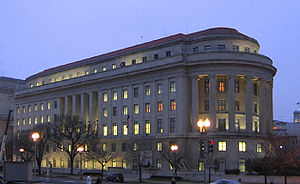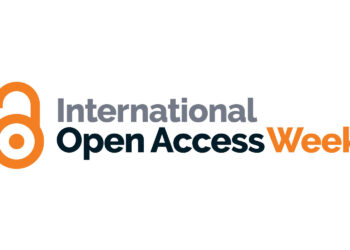
- Image via Wikipedia
Recently, the U.S. Federal Trade Commission (FTC) released a document wryly called a “discussion draft” which summarizes and elaborates upon public meetings and events held to elicit ideas to “support the reinvention of journalism.”
OK, let’s just stop there for an “am I in North Korea?” moment. The government wants to help reinvent journalism? Is this a euphemism? Reinventing journalism is not their job. Journalism belongs to the Fourth Estate, independent of the government — in fact, a primary role is as a watchdog of the government. So, at its roots, government intervention in journalism’s financing — and the “he who pays the piper calls the tune” connotation — is immediately suspect in my book.
But we are talking about the FTC, so maybe they have some insights into things like anti-trust and coercive behaviors and consumer protection. After all, vibrant and vigorous journalism is vital to a working democracy.
Even given the benefit of the doubt, the FTC document almost immediately devolves into a set of assumptions that are clearly off-base. For instance, while acknowledging that radio and television news are different and vibrant in their own right, they limit the discussion of journalism to “the perspective of newspapers to exemplify the issues facing journalism as a whole.” What? CNN is having trouble getting grocery coupon inserts in its Sunday edition? NPR is having trouble attracting job ads? The news business is not embodied by newspapers.
The FTC also stretches the definition of a newspaper to include any online version. They nicely skip over all the indications that newspapers have been their own worst enemies (“enormous debt loads” and “overleveraged transactions” and “staff downsizing” and “severe cuts in expenditures” find their way into the document, but in a clearly heroic manner). And they don’t acknowledge how newspapers and other traditional media exploit free information tools like Facebook and Twitter to lazily learn about news through their desktops. The model of the intrepid flatfoot journalist is clearly in play in the FTC’s romanticized world view of the profession.
The coddling of newspapers in the document is pervasive and a bit nauseating. It goes so far as the FTC worrying over something the agency should be celebrating — the emergence of new, more efficient, and more competitive markets for classified and job ads. Instead, the FTC mourns the revenue loss this market expansion and redefinition has caused for newspapers.
Some of the proposals (a “journalism” division of AmericCorps; a national fund for local news; citizenship news vouchers) have that whiff of totalitarianism mentioned earlier, while others are simply misguided in focusing on newspaper companies and brands as representing some sort of idyllic information age.
In a strong response filed by Google, this kind of sanctity is immediately called out by some clear, ludicrous precedents. Quoting from the book, “Media at War: Radio’s Challenge to the Newspapers, 1924-1939,” Google’s response notes:
. . . one of the most common tactics employed by print journalists in their efforts at institutional self-defense against the invasion of broadcasting was the invocation of sacred rhetoric. . . . In the name of preserving [journalistic] ideals, print journalists argued that they, and not the broadcasters, were the only ones suited to gather news and disseminate news in this country. Thus, as a means of defending their own interests they invoked the interests of the nation.
The same thing seems to be going on in the FTC document — print is being sanctified as a shield for journalists because print preserves the scarcity model of audience and advertising which is being broken down by online commodification and abundance. Google nails this one (and many others) in its response:
The large profit margins newspapers enjoyed in the past were built on an artificial scarcity: Limited choice for advertisers as well as readers. With the Internet, that scarcity has been taken away and replaced by abundance. No policy proposal will be able to restore newspaper revenues to what they were before the emergence of online news. It is not a question of analog dollars versus digital dimes, but rather a realistic assessment of how to make money in a world of abundant competitors and consumer choice.
The FTC document also brings forth ideas like a “hot news” embargo period, during which time breaking news would remain exclusive to its purveyor. The problems with this idea are legion. Do we really want “hot news” like an airliner crash or an oil spill to be in the hands of the first journalists on the scene? Talk about a crazy journalistic situation.
If I were a corporate PR person, I’d be sure to have a designated staff journalist at every job site, so I could control any story for as long as possible.
If a local station with limited resources were to get to a story first, do we really want journalistic capabilities defined by their limited connections, knowledge, and influence?
If the news is like most “hot news” these days, do we really want to be unable to use Twitter and Facebook to laugh at Paris Hilton’s or Snookie’s latest exploits?
The essential message the FTC’s discussants have missed is that news distribution is no longer controllable. We’re all publishers at some level. Scarcity defined models that are rapidly going by the wayside.
Mockery of the FTC’s document by other journalists — professional and amateur alike — was quick and harsh. Fast Company’s headline read, “Google Calls Out Luddite Tendencies in FTC’s Newspaper Protection,” and bloggers at Buzzmachine.com noted that, “The government and publishers should be embarrassed to need such remedial education.”
Essentially, the FTC document is about how to preserve the status quo, not about how to reinvent journalism. It’s anachronistic and unrealistic to think that newspapers can reclaim their glory, even with all sorts of funding machinations and rules around fair use and copyright. Newspapers have been declining in circulation and relevance for decades. Propping them up has led to concessions again and again. During this time, journalism has not improved.
This is a key point. The sickness seeping through traditional media has not improved journalism — it has led to cutbacks, poor business decisions, and a slow self-immolation.
Some organizations are adapting. In a related development, the Washington Post, a news operation that is now quite solidly subsidized by Kaplan Education (called in some circles “a test-prep tutoring service that puts out a newspaper as a hobby”), recently published a well-researched exposé of the national security industry that has emerged since the 9/11 attacks. As a New Yorker essayist noted about the adaptability of the Post‘s reporting corps:
“Top Secret America” is a new kind of journalistic enterprise, pairing expert reporting of the traditional shoe-leather variety with the information-gathering power of the Internet. One of the series’ lead writers, Dana Priest, is a winner of two well-deserved Pulitzer Prizes, for her stories on abuses at Walter Reed and the C.I.A.’s overseas “black sites.” The other, William M. Arkin, is that despised creature, a blogger—or was until he put aside the national-security blog that he conducted on the Post’s Web site to begin his collaboration with Priest. While she worked the phones and racked up the miles, he sat in his converted barn in Vermont, surfing oceans of data.
As important stories like this show, journalism needs to adapt so it can thrive again. The world isn’t the same. Perhaps it’s time to let newspaper publishers duke it out in the market of abundant information — which means we need to abandon business model bunkers based on scarcity and governmental shelters designed to protect the status quo.
Discussion
4 Thoughts on "“The Reinvention of Journalism” — Just Code for “Reinvention of the Status Quo”?"
I think this is an area where Clay Shirky has things exactly right–that revolutions break things a lot faster than new things can be created to replace them. And that’s what we’re seeing here. What will be interesting is the next phase, after the cookie-cutter, interchangeable news sources go out of business (and you’re right in that they’re their own worst enemy, and by cutting costs and sacrificing quality, they’ve sealed their own fates). Will citizen journalism rise to continue the economy of abundance, or will we see a new scarcity economy once news reporting sources are no longer ubiquitous? If you can’t get the news for free everywhere, will people once again be willing to pay for it?
Or will Google create their own news bureau and use it to sell ads?
An interesting read, and I have to agree with Mr. Anderson’s, and Google’s, point of view. The FTC would seem to be out of its jurisdiction if it pursues any action. On an tangential line, the “market of abundant information” also has its downside with respect to the quality of information now available. While in the past news went through a more rigorous process of being vetted, edited and approved for publication, now it seems that anyone with a blog can be considered a “source of information”. CNN’s iReport is another example. Much, if not the majority, of what user submit to iReport is not vetted, but it is reported as news.
I’m not sure I agree with this rose-coloured view of past editorial oversight in newspapers. Most early American newspapers were little more than sources of rumours, unverified statements of fact, and grandiose editorializing.
The main issue at stake here is not the medium (print) or the institutions that were built around gathering and delivering news, but the brands people associated with trust.
Unvetted, unedited, unverifiable sources of news have always existed — and will continue to exist — into the future. The real challenge will be in rebuilding the icons of trust we associated with some of these newspaper brands. They will come, but trust is one of those fragile commodities that is built very slowly.



